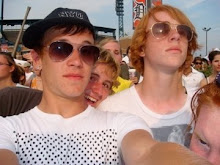 I absolutely adored Chwast's impeccably cool take on Dante's Divine Comedy. The original text is probably one of the most visually inspiring things ever written; from the Gustave Dore etchings to Robert Rauschenberg's bizarre and fascinating collage take, The Divine Comedy, especially The Inferno, has seen a multitude of visual representations. Many of these, like the 2010 EA video game and its comic adaptation by Christos Gage and Diego De LaTorre, have tried to top each other with more and more despairing portraits of horror and gore, often while ignoring Purgatory and Paradise completely.
I absolutely adored Chwast's impeccably cool take on Dante's Divine Comedy. The original text is probably one of the most visually inspiring things ever written; from the Gustave Dore etchings to Robert Rauschenberg's bizarre and fascinating collage take, The Divine Comedy, especially The Inferno, has seen a multitude of visual representations. Many of these, like the 2010 EA video game and its comic adaptation by Christos Gage and Diego De LaTorre, have tried to top each other with more and more despairing portraits of horror and gore, often while ignoring Purgatory and Paradise completely. 
It was incredibly refreshing, then, to see Chwast create a visual language that made for a consistently compelling journey through all three realms of Dante's Divine Comedy, while eschewing the downward spiral of ever-darkening portraits. Chwast's style is very much influenced by blocky printmaking and his background in font and design; his compositions pop, his figures are simplified, and his language is, for the most part, clear.

I adore adaptations of period work that update setting without needing to address it in the text. Chwast's mobsters tickled me to no end, and his design for Satan was particularly different than the portrayal we're used to from Dante's text. His style will turn off many who aren't open to simple, cartoonish work. But, as discussed by Scott McCloud, the simpler the figure, the more we can relate to him or her. It's not Jim Lee or Geof Darrow or anyone else know for there kinetic or hyper-detailed work, but I felt like it served the material to anyone with an open mind.
It was certainly more compelling than the video game...

